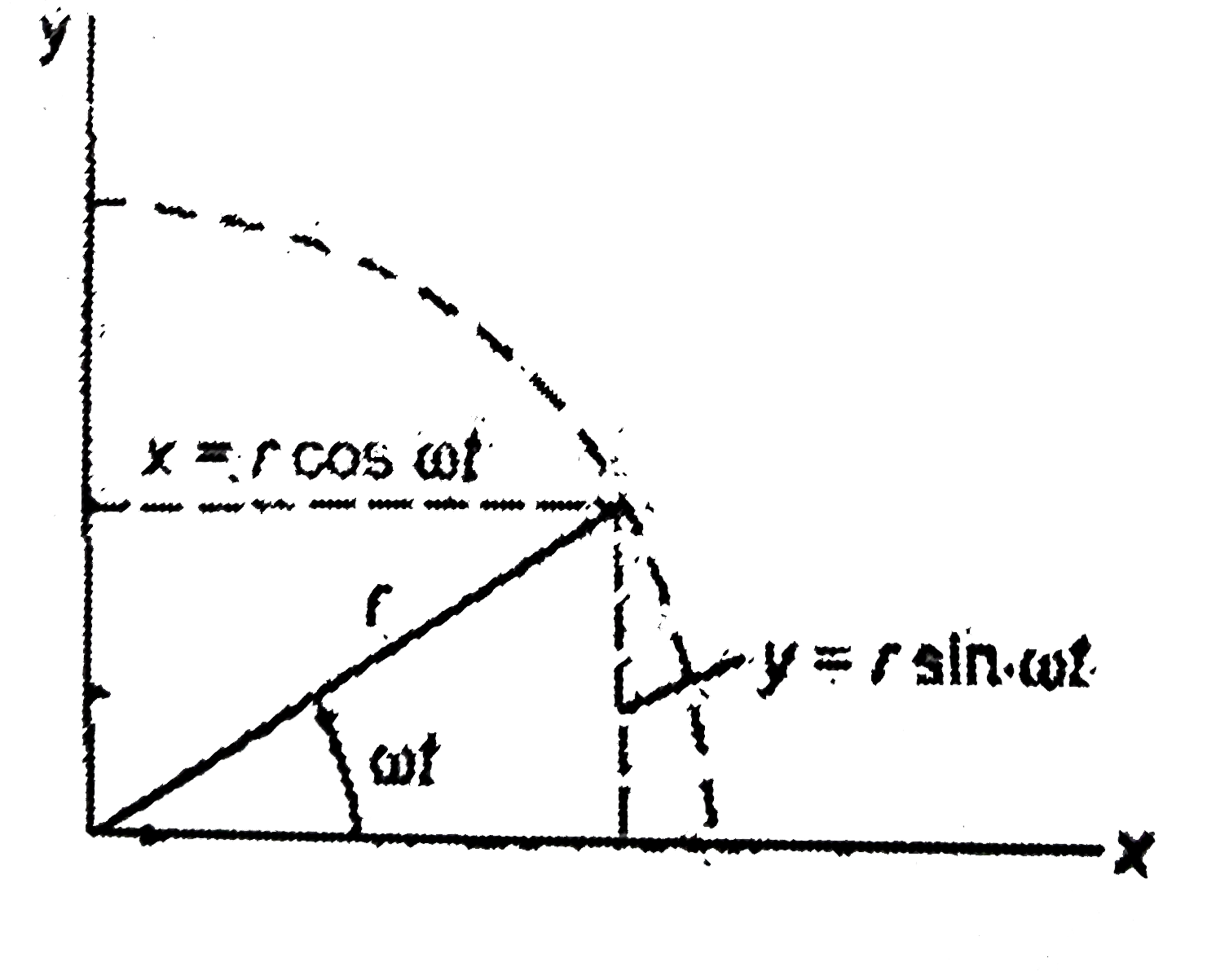If and (where and R are constants), what are x and y components of acceleration when y is minimum ?
To find the x and y components of acceleration when y is minimum, we will follow these steps:
Step 1: Understand the given equations
We are given:
- x=Rsin(ωt)+Rωt
- y=Rcos(ωt)+R
Step 2: Find the conditions for y to be minimum
The minimum value of y occurs when cos(ωt) is at its minimum, which is -1. Therefore:
ymin=Rcos(ωt)+R=R(−1)+R=0
This happens when ωt=π (or t=πω).
Step 3: Calculate the x and y components of acceleration
To find the acceleration components, we first need to find the velocity components by differentiating the displacement equations with respect to time.
For x:
1. Differentiate x with respect to t:
vx=dxdt=Rωcos(ωt)+Rω
2. Differentiate vx to find ax:
ax=dvxdt=−Rω2sin(ωt)
For y:
1. Differentiate y with respect to t:
vy=dydt=−Rωsin(ωt)
2. Differentiate vy to find ay:
ay=dvydt=−Rω2cos(ωt)
Step 4: Substitute ωt=π into the acceleration equations
1. For ax:
ax=−Rω2sin(π)=−Rω2⋅0=0
2. For ay:
ay=−Rω2cos(π)=−Rω2⋅(−1)=Rω2
Final Answer
Thus, the components of acceleration when y is minimum are:
(ax,ay)=(0,Rω2)
We are given:
- x=Rsin(ωt)+Rωt
- y=Rcos(ωt)+R
The minimum value of y occurs when cos(ωt) is at its minimum, which is -1. Therefore:
ymin=Rcos(ωt)+R=R(−1)+R=0
This happens when ωt=π (or t=πω).
To find the acceleration components, we first need to find the velocity components by differentiating the displacement equations with respect to time.
1. Differentiate x with respect to t:
vx=dxdt=Rωcos(ωt)+Rω
2. Differentiate vx to find ax:
ax=dvxdt=−Rω2sin(ωt)
1. Differentiate y with respect to t:
vy=dydt=−Rωsin(ωt)
2. Differentiate vy to find ay:
ay=dvydt=−Rω2cos(ωt)
1. For ax:
ax=−Rω2sin(π)=−Rω2⋅0=0
ay=−Rω2cos(π)=−Rω2⋅(−1)=Rω2
Thus, the components of acceleration when y is minimum are:
(ax,ay)=(0,Rω2)
Topper's Solved these Questions
Similar Questions
Knowledge Check
For a particle moving in the x-y plane, the x and y coordinates are changing as x=a sin ωt and y=a(1−cosωt), where 'a' and ω constants. Then, what can be inferred for the trajectory of the particle ?
AThe trajectory is parabolic.BThe trajectory is ellipticalCThe trajectory is such that distance moved by the particle is directly proportional to time.DThe trajectory of the particle is equidistant from the origin at every instant of time.If dispolacement x at time t is x=acosωt−bsinωt, where ω is a constant, then: acceleration=
Aω2xBωxC−ωxD−ω2xConsider a particle moving in the x−y plane according to r=r(cosωtˆi+sinωtˆj), where r and ω are constants. Find the trajectory, the velocity, and the acceleration.
 APerpendicular to the velocityBParallel to the velocityCDirected away from the originDPerpendicular to the position vector
APerpendicular to the velocityBParallel to the velocityCDirected away from the originDPerpendicular to the position vector
In the relation y=rsin(ωt−kx), the dimensions of ω/k are
View SolutionA particle moves in xy plane accordin to the law x=asinwt and y=a(1−coswt) where a and w are costant . The particle traces.
View SolutionThe displacement of an oscillator is given by
x=asinωt+bcosωt
where a, b and ω, are constant. Then -
View SolutionEquations y=2Acos2ωtandy=A(sinωt+√3cosωt) represent the motion of two particles.
View SolutionA particle moves so that its position vector is given by →r=cosωtˆx+sinωtˆy, where ω is a constant which of the following is true ?
View Solution
